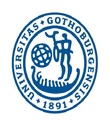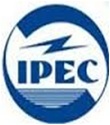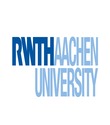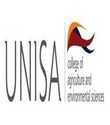Day 3 :
- Track 7: Environmental and Marine Sciences
Track 9: Environmental Management Ethics
Location: Terra Mitica

Chair
Paul Comet
Comet Environmental Consulting, USA

Co-Chair
Cedo Maksimovic
Imperial College London, UK
Session Introduction
Gabriella Ljungstrom
University of Gothenburg, Sweden
Title: Sand lizard phenology in a warming world-positive fitness effects of climate change through phenotypic plasticity and genetic evolution
Time : 09:00-09:20

Biography:
Gabriella Ljungström has completed her BSc from Macquarie University and MSc from the University of Gothenburg. She started her PhD in June 2014 at the University of Gothenburg. She won the Macquarie University International Scholarship in 2008-2011 and the John Morris Scientific Prize in 2010. Her MSc thesis resulted in a manuscript that is submitted for review.
Abstract:
Today, the majority of decisions on management and conservation of species and populations under climate change are based on model simulations, projecting shifts in ranges and abundances, extinction risks, and sustainable rates of change. Although highly important for local adaptation, phenotypic plasticity and evolutionary potential in key limiting traits have only recently been incorporated into modelling frameworks. However, the data needed to run such models; estimates of heritable variation and selection intensities from wild populations, are scarce. In this study we use a large 15-year dataset on an ectotherm model, the Swedish sand lizard (Lacerta agilis), to investigate how inter-annual temperature variation affects oviposition date in a high latitude reptile, a trait strongly linked to offspring fitness and survival. With an interest in short- (phenotypic plasticity) and potential long-term (micro-evolution) consequences of climate change, we applied a quantitative genetic model, yielding estimates of population plasticity and among-individual variation in the average, as well as the plastic, response to temperature. The analyses revealed both population-level plasticity and individual-level variation, along with selection acting on the trait, suggesting that climate warming is likely to have positive fitness effects in this population over short and longer time scales. These findings contrast the predicted global wide extinction risk of lizards under climate change, based on physiological models. Hence, our study highlights the importance of accounting for plasticity and evolutionary potential in key limiting traits when projecting future climatic impacts on species and populations, and provides parameter estimates for the development of more sophisticated models.

Biography:
Paul Comet is a Senior Inorganic Geochemist at Comet Environmental Consulting. He completed his PhD degree from University of Bristol, London in the year of 1983 and postdoctoral from Newcastle University in the year of 1985. His major interests are in developing sustainable economic frameworks for carbon fixation.
Abstract:
If organic waste can be converted to “free” energy, clean water, (& raw materials) for small scale manufacturing/ mending etc. for communal use, then a sustainable community has been created. If the goods, services & crops made are used internally, then maybe a local token currency based on joules of alternative energy from small scale electricity, gas & solar power generation could be used to serve the communities sustainable needs. Maybe silver jewelry/tourist items (woolen blankets) sold for “export” might bring additional (dollar) revenue for purchase of essentials made elsewhere, hence medicines/ hospitalisation/ cell phones/silver from elsewhere would have to be purchased with dollars derived from surplus energy, crops, tourist revenue & welfare. The token currency could not be used for “externals”. Some kind of community bank linked to the power station/ gasifier plant could be set up which would create “municipal energy tokens” based strictly on “redeemable (alternative) energy”. Thus a baked/painted clay pot only for domestic use would be sold for a number of joule tokens. This would include the energy cost in creating the fired pot, as well as the energy cost of the person creating it (food/shelter ).Government oversight would be required as too many tokens would wreck the system. The tokens would be non negotiable externally. Problems that I have not been able to solve are “equivalency” for even if the system “worked” then the tokens would circulate beyond the community as a useable currency, even if prohibited. If war / currency collapse etc disables the currency, then a network of independent sustainable local currencies might work. Hence an external energy source (sun), an ash pile & the contents of the chamber pot could be reborn as a lunar/martian colony filled with people & trees & crops etc. So given just a nitrogen & CO2 atmosphere, abundant water (& enough sunlight), the number of humans sustained in this system would be limited by the number of photons hitting the planet’s surface for the growing of crops, maybe in stacked glass towers. By monetizing fossil fuels you have the petrodollar - by monetizing the photon, whether captured in the waste stream, food or from solar panels, you have a sustainable economy. This scheme needs computer modelling.
Sudhir Kumar Tewatia
Inderprastha Engineering College, India
Title: Sustainable environment-challenges with future vision
Time : 09:40-10:00

Biography:
Sudhir Kumar Tewatia has completed his PhD in 2010 from Delhi Technical University, Delhi, India. He is the Director of Inderprastha Engineering College, a premier engineering institute. He served as Principal and Acting Vice Chancellor (Acad), University of Engineering and Management, Jaipur, India. He had served as senior scientist in ministry of water resources department. He has published several (25+) single authored papers in reputed international journals.
Abstract:
Sustainable development is a socio-ecological process characterized by the fulfillment of human needs while maintaining the quality of the natural environment indefinitely. The environmental stresses are not restricted to particular locales or geographic boundaries and affect the well-being of people everywhere. It is only through new sustainable approaches to development that the planet’s fragile ecosystems can be protected and the aims of human development be furthered. The goal of environmental sustainability is to minimize environmental degradation and to halt and reverse the processes they lead to. This paper deals with an approach to sustainable development emphasizing the need for new conceptions of global development that take cognizance of the fact that social and environmental problems are interconnected. One of today’s environmental challenges is to find ways of strengthening the scientific and socio-economic perspectives to help authorities make decisions and produce sustainable development strategies with a vision for future. The strategies will identify common goals and actions towards ensuring healthy human and natural environments, supporting emerging governance systems, advancing appropriate use of natural resources, building vibrant communities and influencing international activities. Sustainable development is about a more inclusive society, which provides for better protection of the environment and use of natural resources and shares the benefits of economic growth as widely as possible.
Adele Clausen
RWTH Aachen University, Germany
Title: The relevance of background systems on the carbon footprint of municipal solid waste management
Time : 10:00-10:20

Biography:
Adele Clausen studied environmental engineering (Focus: waste management) at RWTH Aachen University. After conducting different research projects in Thailand, she finished her studies investigating the potential of the Clean Development Mechanism towards developing sustainable MSW treatment systems in Thailand. Within her PhD studies, she focused on modelling of rMSW management deriving the models from her practical investigations of the related technical waste treatment processes. During the last years, she presented her research results at numerous international conferences. She submitted her PhD in April 2015, about MBT processes in consequential carbon footprint modelling of rMSW management.
Abstract:
Waste management is one target field, when discussing the options of climate change mitigation. The reduction of greenhouse gas (GHG) emissions from waste management is subject to different legislation (e.g. Kyoto Protocol, EU Waste Framework Directive), which all demand a shift from climate harming uncontrolled landfilling to climate friendly integrated waste management systems. However, the climate impact of different waste management options substantially depends on the individual context that waste management takes place in. Due to not only legislative requirements but also other societal drivers, integrated waste management is currently in the process of being established in many European countries with related decisions to be made. In order to allow decision makers for considering the climate impact of different waste treatment alternatives, tools are required that provide the option to compare the alternatives while taking into account the individual background conditions. However, a lack of appropriate tools was identified that allows comparing the climate relevance of the two most important residual municipal solid waste (rMSW) treatment technologies, which are waste incineration and mechanical-biological treatment (MBT). Hence, a model that applies a consequential life cycle assessment approach was developed. Those background conditions that impact the climate performance of either of the considered rMSW treatment technologies or related upstream/downstream processes were identified. The model allows adapting the background conditions to an individual (European) context. By modelling varying context situations, the relevance of different background conditions on the climate impact of MBT and waste incineration is assessed.
Cedo Maksimovic
Imperial College London
UK
Title: Integrated planning for urban sustainability and resilience to climate change and weather extremes: Blue Green Dream’s integrated interactions
Time : 10:20-10:40
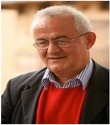
Biography:
Cedo Maksimovic is a Editor in Chief of Urban Water Journal, (ISI) and of Urban Water Book Series published by Taylor and Francis. He has published over 420 papers and authored and edited 42 books. He is a recipient of the 2009 ICE’s (Institution of Civil Engineers) Premium Prize "Telford Gold Medal" for the paper on intelligent sensors and networks. His research areas are Applied ICT in Fluid Mechanics, Hydraulics, Hydrology, Storm drainage, Urban flood modelling/prediction and risk assessment, BGD-Blue Green infrastructure, Sustainable Rehabilitation of Urban Environmental Systems, Water asset management, Urban stream rehabilitation, River Basin Management and Smart urban water systems
Abstract:
This presentation introduces the innovative urban planning method developed by the Blue Green Dream (BGD) project which is aimed at achieving high levels of sustainability and resilience to the negative impacts of climate change and extreme weather events on urban / built environment. The Blue Green Dream approach entails harnessing the interactions between urban water infrastructure, urban green spaces and other urban ecosystems and functions to yield sustainable, resilient city systems that move from centralized water, energy and waste utilities to decentralized but integrated systems. By interlinking urban water infrastructure (blue) and urban vegetated areas (green infrastructure) systems, resource efficient, multifunctional Blue Green Solutions for supporting urban adaptation to climate change are produced. The benefits of Blue Green Solutions include; (a) resilience to droughts & floods, (b) reduction of water, air and noise pollution, (c) mitigation of the urban heat island effect, (d) Increase of amenity, human health & wellbeing, (e) reduction of operational costs (lower energy & water bills), (g) enhancement of biodiversity & urban agriculture, (h) improvement of governance and reduced socio-economic problems. Key to the BGD concept is the replacement of conventional, linear urban resource flows with the BGD based, circular resource flow model, with localized recycling and generation of “new” resources.
Lamzira Lagidze
Iv. Javakhishvili Tbilisi State University, Georgia
Title: The role of landscape in cliamate formation (Samtskhe Javakheti region, Georgia)
Time : 11:00-11:20

Biography:
Lamzira Lagidze is an Associate Professor of Ivane Javakhishvili Tbilisi State University (TSU), Faculty of Exact & Natural Sciences, Department of Nature Use Management; Head of Department of Atmosphere Ecology, Institute of Applied Ecology at TSU. She has completed her PhD in Radio-Meteorology from TSU in 1985. She has published over 70 papers (some of them in reputed peer-reviewed journals), etc.
Abstract:
Georgia, which is characterized by complex physical-geographical conditions (altitude is in range of 0-5068 m) is considered as an example of mountainous country with diverse climatic conditions. In this regard especially, it stands out as one of the regions of Georgia Samtskhe-Javakheti, which is located in the South of country. Its climatic conditions significantly differ from other regions of Georgia. One of the reasons of its climate diversity are the character of underlying surface and altitude (900- 3300 m), surface dismemberment, repeatability of gorges, vegetation cover, which leads to an unequal heating of underlying surface and strengthening of circulatory processes. Vegetation cover in region is immensely transformed under influence of anthropogenic factors, which dramatically alters climatic conditions. The lowest absolute minimum of temperature in region ranges between - 29-41ºC. Absolute maximum temperature is 34-39ºC. Annual amplitude of temperature is as high as 24-25ºC, which refers to continental character of climate in this region. Annual precipitation level on the territory of this region ranges between 400-1400 mm. Key role in territorial distribution of precipitation here is played by landforms. Region is surrounded by high mountains on each side. Air flows are descending in nature, the moisture is limited therein. As a result, region is poor in precipitation. Prevailing winds vary widely in region and their direction is congruent with valleys. In many cases it became mountain-valley type. Region is rich in recreational terms and is important for study against the background of climate change.
Tanmay V Kotasthane
Jawaharlal Nehru Technological University, India
Title: Sorghum as lignocellulosic biomass for biofuel production
Time : 11:20-11:40

Biography:
Tanmay V Kotasthane is a young researcher having more than 7 years of experience in the area of feedstock development for biomass and bioenergy. He has published more than 10 research papers in national and international journals. Also he has contributed in the development of two sorghum variety. He completed Doctoral studies from JNTU Hyderabad, India.
Abstract:
Bio-ethanol from lignocellulosic biomass is one of the important alternatives being considered due to the easy adaptability of this fuel to existing engines and because this is a cleaner fuel with higher octane rating than gasoline. Biomass feedstock has significant potential to contribute biofuel production and to decrease green house gas emission. Cellulose makes a large fraction of the plant dry weight, being typically in the range of 35-50%. Lignocellulosic biomass is considered as the only foreseeable feasible and sustainable resource for renewable fuel; but the lingo-cellulosic ethanol commercialization is largely limited due to the lack of easily digestible substrate or cost effective processing technologies and cost of enzymes. Cellulosic ethanol is a biofuel produced from wood, grasses, or the non-edible parts of plants. It is a type of biofuel produced from lignocelluloses, a structural material which makes most of the biomass of plant. Pretreatment methods are not well established in rice bran, wheat straw. On the other hand special type of sorghum i.e., BMR sorghum can be used in introgression breeding program to develop low lignin cultivars suitable for pretreatment methods. Among all methods available for the pretreatment of lignocelluloses, acidic and alkaline treatments have been proven to have practical advantages. Sorghum feedstock is good cellulosic substrate for bio-ethanol production. Reduced lignin concentration in lingo-cellulosic biomass can increase forage digestibility and saccharification yields of biomass for bioenergy.
Julius Mandigma Galdiano
University of the Philippines
Philippines
Title: Tsunami hazard assessment along the coast of Lingayen Gulf, Pangasinan, Philippines
Time : 11:40-12:00

Biography:
Julius Mandigma Galdiano has completed his Masters Degree at the age of 38 years from National Graduate Institute of Policy Studies in Tokyo, Japan. He has completed his Graduate Diploma in Urban and Regional Planning from the University of the Philippines and Graduate Diploma in Tsunami Disaster Mitigation from the International Institute of Seismology and Earthquake Engineering in Tsukuba, Japan. He is the officer-in-charge of Sinait Seismic Station-PHIVOLCS. He is involved in researches on earthquake disaster mitigation. He co-authored several paper presented in scientific conferences.
Abstract:
This study discusses the tsunami simulation performed in Lingayen Gulf using two different earthquake scenarios. Three bathymetry datasets (GEBCO 1 arc-min, GEBCO 30 arc-sec, and GEBCO 30 arc-sec updated with digitized bathymetry points) were used and the resulting tsunami heights and travel time calculation were compared. The results further complement the objective of the existing tsunami sensor installed in Lingayen Gulf, which aims at giving timely warning when a tsunami strikes the coastal communities. The simulation results demonstrated that the two earthquake scenarios produced different tsunami heights and travel times. Also, the uses of GEBCO 1 arc-min and GEBCO 30 arc-sec bathymetry datasets have remarkable differences on the resulting tsunami heights and travel times. Whereas, the uses of GEBCO 30 arc-sec and GEBCO 30 arc-sec updated with digitized bathymetry points have negligible differences. The existing tsunami sensor is effective as an alarm system in the inner bay, while it is ineffective in the outer bay. A combination of the existing and a proposed site of tsunami sensor along the Lingayen Gulf would advance to a robust tsunami early warning system to the affected coastal communities.
Shadung J Moja
University of South Africa
South Africa
Title: Characterisation of dust fallout around the city of Tshwane in South Africa
Time : 12:00-12:20

Biography:
Shadung J Moja is currently teaching and supervising M&D research projects within the Department of Environmental Sciences (DES) at the University of South Africa (UNISA). His master’s and doctoral degrees are in Analytical Chemistry and Environmental Management respectively. He has served the academia for more than 16 years at 6 different universities. He also has 4 years of industrial chemistry experience and more than 3 years of consulting in air quality and waste management. He has published 15 peer reviewed articles.
Abstract:
The aim of the study was to characterize dust fallout in urban and sub-urban areas around Tshwane. The dust fallout samples were collected at five different sites following the internationally accepted standard procedure for collection and analysis, the American Standard for Testing Methods (ASTM-1982). Passive single buckets containing ¾ of distilled water and 10.0 ml of sodium hypochlorite (NaClO) solution, hoisted at a height of about 2.5 m were exposed from March – June 2013 and were collected every month end for laboratory analysis using Inductively Coupled Plasma – Mass Spectrometry (ICP – MS) and Scanning Electron Microscope – Energy Dispersive X- ray (SEM – EDX). A total of twenty (20) dust fallout samples were digested through heating on a hotplate with 5.0 ml of 70% HNO3 and 2.0 ml of 30% H2O2.The elemental concentrations measured using ICP – MS decreased in the following order: Fe>Ca>Al>Mg>P>S>Mn>K>Cu>Na>Zn>Pb>Cr>Ni>V>Co>Mo. Four (4) particle groups (quartz/silica, alumino silicates, industrial and biological particles) were identified with the SEM – EDX method of analysis. The particles ranged from 4 to 100 µm in diameter sizes and their morphologies included agglomerate and irregular.

